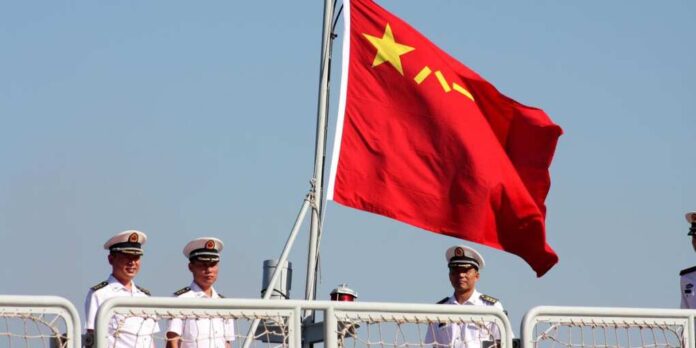
President Donald Trump has put China on notice after Beijing announced plans to conduct naval live-fire drills off Australia’s east coast, a provocative move that’s got conservatives sounding the alarm. On Friday, China warned it would hold these exercises in international waters, forcing commercial flights to reroute and drawing sharp attention from Australia and New Zealand’s militaries. For Republicans, this isn’t just a flex—it’s a direct challenge to Western allies and a sign of China’s growing aggression under a weak global order left by Democrats.
China’s foreign ministry tried to downplay the drills, claiming they’re routine training.
“China’s military had organised a naval formation to conduct training and exercises in distant waters,” a spokesperson said, insisting they’re “safe, standard and professional” and compliant with international law.
But the timing’s no coincidence. Three Chinese warships—frigate Hengyang, cruiser Zunyi, and replenishment vessel Weishanhu—were spotted last week steaming south, now lurking 150 nautical miles east of Sydney, per the Financial Times. Australia’s air safety agency fired off warnings to airlines, with Airservices Australia stating, “As a precaution, we have advised airlines with flights planned in the area.”
Australia’s left-leaning Prime Minister Anthony Albanese shrugged it off.
“This is activity that has occurred in waters consistent with international law,” he said. “There has been no imminent risk of danger to any Australian assets or New Zealand assets, and that’s why this notification occurs.”
Defense Minister Richard Marles admitted it’s “unusual” but not “unprecedented,” noting Aussie ships and planes are tracking the Chinese task group in the exclusive economic zone—waters where Australia has resource rights but not full sovereignty.
Trump didn’t hesitate to weigh in, blasting China’s move on Truth Social as “a dangerous provocation” and vowing to bolster U.S. naval presence in the Pacific. For conservatives, this is red meat—China’s been emboldened by years of Biden’s soft stance, and now they’re testing allies like Australia, a key player in the Indo-Pacific. Jennifer Parker, a former Aussie naval officer, didn’t buy Beijing’s “routine” excuse.
“This is part of a broader power projection from the PLA-Navy and we should expect to see more of this in the Pacific and in the Indian Ocean,” she warned. “The point of this deployment, I think, is to demonstrate to Australia that they have the capability to come down and operate in our maritime domain.”
New Zealand’s Defense Minister Judith Collins confirmed her forces are also monitoring the ships, saying, “We have not been informed by the Chinese government why this task group has been deployed into our region, and we have not been informed what its future plans are.” Posts on X echo the GOP outrage—one user fumed, “Chinese vessels now conducting live fire exercises in the Tasman. This is serious. It is a deliberate, provocative threat.”
Republicans aren’t shocked—China’s been flexing since Biden let them off the leash. Trump’s team sees this as a wake-up call: Beijing’s not just buzzing Taiwan anymore—they’re pushing boundaries closer to our allies. With the U.S. Indo-Pacific Command’s head, Adm. Samuel Paparo, visiting Australia this week, the timing screams defiance. Conservatives know Trump’s response—beefed-up fleets, tougher trade penalties—is the only language China respects. The GOP’s ready to back him, ensuring America’s allies don’t face this bully alone.
